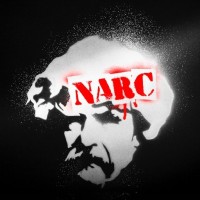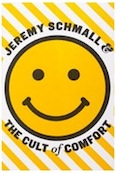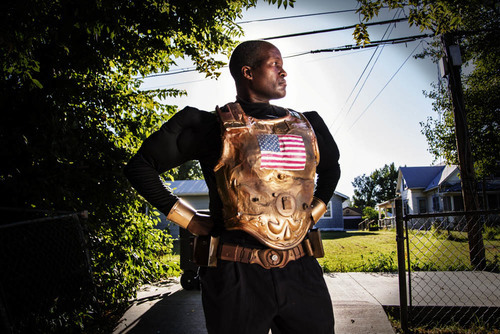- 8 years ago
-
Véronique Hyland of New York Magazine reported on Council of Fashion Designers of America’s (CFDA) efforts to “revolutionize Fashion Week.”
Vivien Killilea/Getty Images for NYFW
A major possible change to the twice-yearly showcase includes transforming Fashion Week into a consumer-driven event, instead of an industry one. And the redesigned series would “show in-season merchandise to the public.”
This is a huge move because designers typically showcase collections for following seasons, amid rabid fanfare and exclusive pageantry. And, in turn, these fashion showcases would influence fast-fashion looks, clandestinely sold at stores like H&M and Zara, that surface sometime later in the future.
Frazer Harrison/Getty Images for Mercedes-Benz Fashion Week
However, this method is thought to be a great way to spur “buy now, wear now” opportunities for the public. The re-formmated showcases would require designers to host “smaller showroom presentations and appointments with retailers and press,” presenting designs six months out for possible purchasing purposes. Then, designers would produce large-scale runway shows for a consumer audience, WWD reports.
CFDA Chairman Diane von Furstenberg tells WWD “ I have a feeling people will be showing what’s available closer to what’s in store. I don’t have all the answers.” However, the general goal is to boost “full-price selling” of clothing.
This week, designer Rebecca Minkoff announced a big step—a Spring 2016 collections to be presented “in front of a consumer audience.” WWD says that at Minkoff’s Spring show, 30 to 50 percent would be consumers.
Ebay
There are many proponents to this bold endeavor, including Ken Downing, senior vice president, fashion director of Neiman Marcus: “I am an enormous proponent of relooking and recalibrating how we use the fashion show that has become a mega-marketing event,” he says.
“The history of fashion shows was to show the buyers and the press the message of the season, he says, adding, “but technology has utterly changed everything in our industry.” Downing continues: “That customer continues to follow Instagram and Twitter and watches the live-stream of fashion shows. When they are seeing clothes, they are less aware of seasons. What they are seeing, they want,” he said.
In the meantime, the right solution has not presented itself as of yet. CFDA’s Steven Kolb says that there might be a hybrid showcase between the consumer and industry members. Or, “they might come back and say, ‘There’s nothing to fix. Keep it the same,’ says Kolb.
Only time will tell.
Latest News
- 8 years ago
-
“Our doubt is our passion, and our passion is our task.” Henry James’ words are apt in describing the art-making process, and how it can explore uncertainness through introspection. In the process, the artist and viewer enter into an intangible, unpractical, and highly emotional place that is ultimately the most passionate because it allows them to explore the more ambiguous realms of the self.
This is exactly the intent and effect of “I DREAMT,” New York performance artist Nicholas’ Gorham’s recent production. In it, he lip syncs sound bites by Delia Derbyshire, a leading British electronic musician from the 1960s. He was utterly fascinated by their evocative beauty, and knew he would eventually incorporate them into a performance. The sound recordings are different voices describing a nightmare of being chased, and Nicholas switches from one character to another in a matter of seconds. This is achieved by having light projections of different outfits cast onto his body, which is the sole illuminated presence in a darkened room. Coupled with the haunting repetition of phrases, such as “I’m running away…running, and running, and running” in each of the different voices, the result is dark, painful, but incredibly engrossing especially if you have ever had nightmares.
He plans to take this the exploration of the subconscious further in his upcoming Christmas theater production, also focusing on time, space, identity, and superficiality but with a stronger social commentary. In fact it is all about materiality and consciousness. Set far into the future, society has a greater awareness of the universe and metaphysics. Yet when small things go wrong around Christmas time, chaos still abounds. People cannot let go of their ties to material satisfaction regardless of having superior knowledge. The world has changed, yet stayed the same. He says, “The point is to make work that is really geared through the progression of humanity, and that has an intention of pushing us further. And as an artist is it important that my personal progression is infused in my work as well.” By being unafraid of dissecting states of vulnerability as well as states of consciousness, his work is able to resonate with viewers, which is should, at the heart of it, be the goal of the artistic process.
See his Christmas play December 18th at Wild Projects, and check out the performance of “I DREAMT” at Splatterpool Artspace here.
-Sabeena Khosla
- 8 years ago
-
“If it doesn’t inspire you in some way, I failed as a filmmaker,” says Richard “R.G.” Miller, the subject of Justin Johnson’s new documentary Double Digits: The Story of a Neighborhood Movie Star. Of course the same can be said of Johnson’s homage to Miller, a prolific, super low-budget auteur who makes movies for the sheer love of it. Against many odds, Miller has succeeded in not only pursuing his passion, but getting many other people enthused and involved in the process. Double Digits celebrates the fact that while some may may aim for mega fame and fortune, those with extremely modest means and realistic ambitions should not be discounted as artists, and in fact, may be truer to their art.
We’re introduced to 52-year-old Miller at his Wichita, Kansas apartment — which doubles as his studio — and learn that his one-man production company RG Internet Art Films has released several half-hour to hour-long features on Miller’s Youtube channel. “Thank God for the Internet,” he chuckles, not attempting to create a viral sensation with his compelling, delightfully lo-fi movies. “If I get double digits [more than nine “likes”], I’m successful.”
Double Digits, which was shot over the course of three years, shows the making of Miller’s newest effort, The Mask Man, shot in his apartment and on his side lot, as are all of his films. His painstaking DIY efforts include miniature stand-ins (dolls), homemade costumes and masks, and various household items that have been transformed into props. He also writes all the scripts, plays most of his characters and inserts dialogue in a variety of accents. Miller, who specializes in sci fi, horror, action and superhero genres, cheerfully admits that not all of his output is up to snuff, which just means that he has to make a better sequel. It’s hard not to be impressed by his productivity and ingenuity.
We see him set up, shoot and reshoot scenes, deal with adverse weather and botched dialogue (his), and handle other adversities. Patient and methodical, he’s undeterred by setbacks, not only accepting that there will be frustrating moments in order to get good results, but thriving on it. Miller works nights as kitchen supervisor at the county jail — no easy job — and we hear from several co-workers, as well as relatives (especially brother Ephrem and cousin Tracy), several of whom have been involved in his films. All of them express admiration, if not downright awe.
In between scenes of his current project, we find out Miller’s backstory. Raised with various siblings and cousins by his grandparents after his mother died giving birth to him, R.G. grew up poor and a daydreamer. Always inventive, he acquired a cheap camera and began making movies in his early teens, screening them for friends and family in the toolshed. At age 17, he sent a film to Orion Pictures and the company expressed interest, but having no idea how to pursue the opportunity, Miller let it go.
At one point he enjoyed some local celebrity, but Miller’s life and
dreams began unraveling after his friend and producing partner was murdered and the neighborhood started to deteriorate. Several more family deaths led the depressed Miller to drug use, homelessness and eventual prison time. Knowing the importance of filmmaking to R.G.’s well-being, Ephrem figures out how to get his brother inspired again. By this point, many neighborhood kids have begun collecting his movies, and we see how Miller has influenced various people around him.
Johnson, who first encountered one of Miller’s films when he worked at an Internet video startup, was so inspired by the man’s story that he used crowd sourcing to fund a “red carpet moment” – the first public screening of one of Miller’s movies in 25 years – at the Warren Old Town Theatre in Wichita. The last part of Double Digits shows the buildup to this momentous occasion. (Of course, Johnson’s doc is the ultimate manifestation of his regard for Miller.)
Double Digits is a touching movie about how the creative spark can become a life force. In many ways, those without many material or other advantages are the most transformed by the passion for some kind of artistic expression, no matter how modest. And finally, it shows how much an entire community can benefit from someone like Miller. Check out his work here: https://www.youtube.com/user/cheaphomemademoives/
Double Digits: The Story of a Neighborhood Movie Star is available on video on demand.
—Marina Zogbi
- 8 years ago
-
 Tommy Siegel is best known as the guitarist of either piano band Jukebox the Ghost or noise rock group Drunken Sufis. The two bands exist on fairly opposite ends of the genre spectrum, with one brimming with gentle introspection and optimism while the other stopping its feet and howling against the government. Siegel has pooled elements of both projects, like the political-savvy of the Sufis and the humor of a younger Jukebox, to fuel his newest act: Narc Twain.
Tommy Siegel is best known as the guitarist of either piano band Jukebox the Ghost or noise rock group Drunken Sufis. The two bands exist on fairly opposite ends of the genre spectrum, with one brimming with gentle introspection and optimism while the other stopping its feet and howling against the government. Siegel has pooled elements of both projects, like the political-savvy of the Sufis and the humor of a younger Jukebox, to fuel his newest act: Narc Twain. A dystopian punk band, the group was born from of all things a book of poetry. The symbiotic nature of Brooklyn is perhaps to thank for Siegel’s chance encounter with the book. He found Jeremy Schmall & Cult of Comfort by Jeremy Schmall in the recycling bin of his apartment building last year. The 99-page collection is brief, with fifty or so poems channeling anxiety, paranoia, pain, discomfort, understanding, introspection, hunger and hitting on a myriad of other emotions that the reader didn’t necessarily see coming. The poems twist and hairpin turn in a way that would make all MFA students smile and all passer-bys wonder what exactly did they pick up out of the recycling. The commentary on capitalism and cynicism struck a chord with Siegel. He wrote Schmall, whose email was hidden in plain sight in a poem in Cult of Comfort, eventually sending him music. And thus Schmall inspired what would eventually become the six song EP that is Narc Twain.
 The band released the debut EP last week, playing a show in celebration at Brooklyn’s Knitting Factory. With Philadelphia’s Lithuania and locals Norwegian Arms opening, Siegel along with drummer John Thayer, guitarist Aaron Leeder, keyboardist/vocalist Dave Cohen and bassist Brett Niederman brought the disenfranchised and discontented EP to life. With posters with “better luck in the next life” and the author of “The Great American Novel” spray-painted across them propped against their amps, the band looked punk enough. They sounded more the part.
The band released the debut EP last week, playing a show in celebration at Brooklyn’s Knitting Factory. With Philadelphia’s Lithuania and locals Norwegian Arms opening, Siegel along with drummer John Thayer, guitarist Aaron Leeder, keyboardist/vocalist Dave Cohen and bassist Brett Niederman brought the disenfranchised and discontented EP to life. With posters with “better luck in the next life” and the author of “The Great American Novel” spray-painted across them propped against their amps, the band looked punk enough. They sounded more the part.With dystopian, paranoid and anxious lyrics set to sharp guitar riffs and synths, Narc Twain’s songs are a similar sort of ride when compared to Cult of Comfort. They’re dark and dappled with humor. Siegel’s versions of the future include a different sort of life aquatic in which “most of Manhattan was underwater…an aquarium lined with hedge funds and coffee chains” in “Downhill” and a post-apocalyptic darkness in which “the sun [is] gone for seven months and 27 days” in “And Today, Nothing.” These outcomes, inspired in part by the book and in part by his own imaginings, are equal parts ridiculous and right on. You have to hand it to Siegel, if Manhattan flooded in some sort of end-of-the-world scenario that is exactly what it would look like.
 These nightmarish visions are accompanied by complaints and observations that sounds less like Siegel is just trying to get attention (as the somewhat jarring imagery might suggest) and more like he’s actually paying attention. In “No Connection”, he outlines the bizarre and sudden death of journalist Michael Hastings. While listings off some the characteristics of the crash, he asks, “Don’t you think it’s peculiar? Don’t you think it’s strange?” From the sounds of it, it seems like Siegel thinks it’s more of a cover-up than just a conspiracy theory, but either way it makes for an intriguing song.
These nightmarish visions are accompanied by complaints and observations that sounds less like Siegel is just trying to get attention (as the somewhat jarring imagery might suggest) and more like he’s actually paying attention. In “No Connection”, he outlines the bizarre and sudden death of journalist Michael Hastings. While listings off some the characteristics of the crash, he asks, “Don’t you think it’s peculiar? Don’t you think it’s strange?” From the sounds of it, it seems like Siegel thinks it’s more of a cover-up than just a conspiracy theory, but either way it makes for an intriguing song. This, the intelligence of Narc Twain is what makes it successful. Throughout the EP, Siegel name drops phrases like “agent orange” and with each song hedges into increasingly political territory. As he brings each topic to the table, Siegel presents it without pretension. He doesn’t try to wow listeners with unnecessary, attention-grabbing SAT words. Rather he lets the sentiments speak for themselves using the issue’s own rhetoric (eg, “it’s their god given right”) to make his point, albeit sarcastically.
As a results, Siegel comes across as very well-informed, proving that just because he writes punk songs, not NYTimes articles doesn’t mean that he can’t tackle something bigger than just general dissatisfaction. However, Siegel doesn’t take this role too seriously. Instead of calling his band “Alvin Toffler and the Futurists,” Siegel made a bad pun and wrote “Future Shock.”
Siegel sounds very natural and comfortable in this tone, which in turn makes Narc Twain sound like a very genuine pet project. With so much of music ghostwritten, it’s refreshing to hear the somewhat nerd-y Narc Twain EP. It wasn’t written to compete with TSwift or fuel the pop engine. It was written because a guitarist from Brooklyn who has probably read more Wikipedia articles than the average person was so into a book of poetry that he wrote songs based on it. Whether, as a listener, you want to take it as serious social commentary or if you just wandered over from Team Jukebox, it’s a great listen and a promising start from an already well-defined band.
-Zoe Marquedant
- 8 years ago
-
Just announced on December 2: The British Fashion Council has chosen its eight emerging designers for its biannual Newgen initiative, sponsored by Topshop. The designers will present their 2016 looks during London Fashion Week this February.







